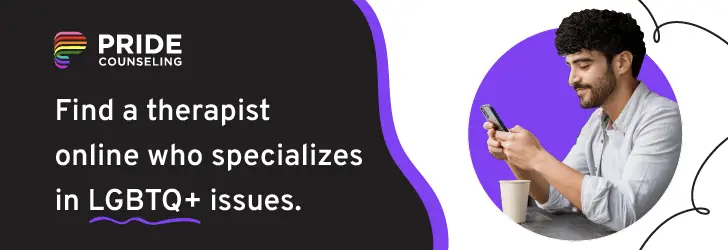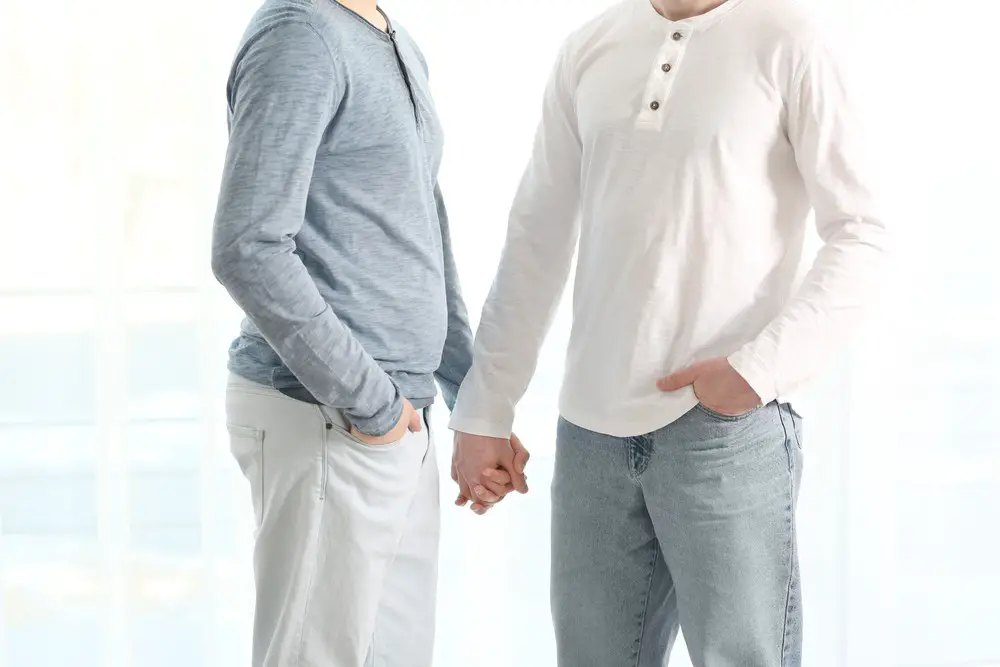As a BetterHelp affiliate, we receive compensation from BetterHelp if you purchase products or services through the links provided
The article discusses the experiences of a bisexual husband and the challenges he faces in his personal life. The topic is relevant as many people in the LGBTQ+ community struggle with acceptance and understanding from their partners and society. The article aims to provide insight into the life of a bisexual husband and the importance of acceptance and support in a relationship.
The article begins by introducing the concept of bisexuality and its stigma. Next, it highlights the misconceptions and stereotypes that bisexual individuals face, including the assumption that they are confused or promiscuous. The article then delves into the life of a bisexual husband, discussing his experiences with coming out to his partner and family and the challenges he faces in maintaining a healthy relationship.
The article also addresses the importance of communication and support in a relationship. It emphasizes the need for partners to be open and understanding towards each other’s sexuality and to provide a safe and accepting environment. The article aims to raise awareness and promote acceptance of the LGBTQ+ community, particularly bisexual individuals and their experiences.
Understanding Bisexuality

What is Bisexuality?
Bisexuality is a sexual orientation characterized by the attraction to people of two or more genders. A bisexual individual may be attracted to people of the same gender as themselves and people of different genders.
Bisexuality vs. Other Sexual Orientations
Bisexuality is often confused with other sexual orientations, such as pansexuality or omnisexuality. While pansexuality is the attraction to people regardless of gender identity, bisexuality is the attraction to people of two or more genders. Omnisexuality, on the other hand, is the attraction to all genders, including non-binary genders.
Common Misconceptions About Bisexuality
Several common misconceptions about bisexuality can lead to confusion and misunderstanding. Here are a few of them:
- Bisexual individuals are confused or going through a phase.
- Bisexual individuals are equally attracted to all genders.
- Bisexual individuals are more likely to cheat on their partners.
- Bisexual individuals are not capable of monogamy.
In reality, bisexuality is a valid and legitimate sexual orientation, and bisexual individuals can have healthy, fulfilling relationships with people of any gender.
Overall, it is essential to understand and respect the diversity of human sexuality and to recognize that bisexuality is a valid and critical aspect of that diversity.

Navigating Relationships as a Bisexual Husband
Coming Out to Your Partner
One of the most challenging aspects of being a bisexual husband is coming out to your partner. It can be scary to share such a personal aspect of your identity, but it is essential to do so for the health of your relationship. Being honest and open about your feelings and desires is crucial when coming out. It is also essential to be prepared for potential reactions from your partner, including shock, confusion, or even anger.
Exploring Your Sexual Identity Within a Relationship
After coming out, it is essential to have open and honest communication with your partner about your sexual identity. This can include exploring your desires and fantasies and finding ways to incorporate them into your sex life. Establishing boundaries and discussing what is and is not comfortable for both partners is also essential.
Dealing with Stigma and Discrimination
Unfortunately, bisexual men often face stigma and discrimination within and outside the LGBTQ+ community. This can lead to feelings of shame, guilt, and anxiety. Finding support from within the community is crucial, whether through support groups or online forums. It is also essential to educate yourself and your partner about bisexual identity and the unique challenges faced by bisexual men.
Navigating Monogamy and Non-Monogamy
Bisexual men may experience attraction to both men and women, which can lead to questions about monogamy and non-monogamy. Therefore, it is essential to have open and honest communication with your partner about your needs and desires. This can include discussing the possibility of opening up the relationship or finding ways to incorporate fantasies and desires into your sex life while maintaining monogamy.
In conclusion, being a bisexual husband can be challenging. Still, with open communication, support from the LGBTQ+ community, and a willingness to explore and understand your sexual identity, it is possible to have a fulfilling and healthy relationship.
What to do if your husband is Bisexual

If you have discovered that your husband is bisexual, it can be confusing and challenging for both of you. Here are a few things you can do to help navigate this situation:
- Communicate openly and honestly: It’s essential to have a conversation with your husband about his bisexuality. Ask him how he feels, what he wants, and what he needs from you. Then, listen to his answers without judgment or criticism.
- Educate yourself: If you’re not familiar with bisexuality, take some time to learn about it. Read books, articles, and blogs written by bisexual people. Attend a support group or seek counseling to help you understand and cope with your husband’s sexuality.
- Respect his boundaries: Bisexual people can decide who they want to share their sexuality with. If your husband is not ready to come out to friends or family, respect his decision. Don’t out him to anyone without his consent.
- Don’t make assumptions: Just because your husband is attracted to both men and women doesn’t mean he’s more likely to cheat or leave you for someone else. Bisexuality is not a choice and doesn’t define a person’s character.
- Seek support: If you’re struggling to accept your husband’s bisexuality, seek support from friends, family, or a therapist. You’re not alone; some people can help you navigate this situation.
Remember, your husband’s bisexuality doesn’t change who he is or his love for you. You can work together to build a strong and healthy relationship with open communication and understanding.
Finding Support and Community
Joining a Support Group
For many people, having a support group can be incredibly helpful when navigating the complexities of a relationship with a bisexual partner. Many different types of support groups are available, from those specifically for partners of bisexual individuals to those that are more general. These groups can provide a safe and non-judgmental space for people to share their experiences, ask questions, and receive support and advice from others who have gone through similar situations.
Connecting with the L.G.B.T.Q. Community
Connecting with the L.G.B.T.Q is another excellent way to find support and community. Community. This can be done by attending events, joining social groups, or following L.G.B.T.Q. influencers and content creators on social media. By immersing themselves in the community, partners of bisexual individuals can better understand their partner’s experiences and connect with others who may be going through similar situations. Additionally, being part of the L.G.B.T.Q. community can provide a sense of belonging and acceptance that may be hard to find elsewhere.
It is important to note that not everyone will feel comfortable or safe joining a support group or connecting with the L.G.B.T.Q. community. Each person’s journey is unique, and respecting each individual’s decisions and boundaries is essential. However, for those who are open to it, finding support and community can be incredibly beneficial when navigating the challenges of a relationship with a bisexual partner.
- 3 Ways Wearing a Hat Can Help Lower Your Stress Levels - April 19, 2025
- Breaking the Silence: Why Men’s Mental Health Matters More Than Ever - April 15, 2025
- How to Transform a Home’s Patio Space into a Relaxing Space - March 23, 2025
This site contains affiliate links to products. We will receive a commission for purchases made through these links.



